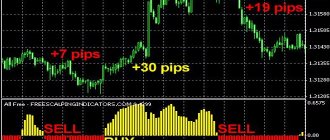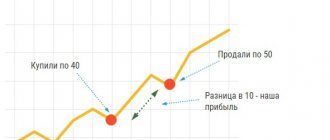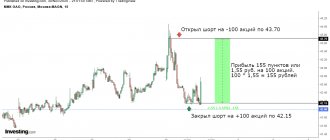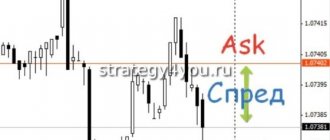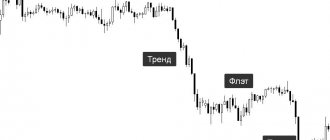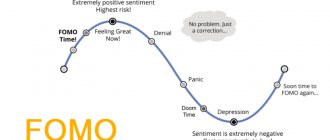Updated: Exchange employees have identified 156 traders who were affected by the inactivity of the platform. They were compensated for the damage in the equivalent of 40,297 bitcoins.
We have identified the root cause of two DDoS attacks at 02:16 UTC and 12:56 UTC, 13 March 2022. For a full account of what happened and how we are responding, please refer to our blog: https://t. co/RS7YtX1xOD
— BitMEX (@BitMEX) March 17, 2020
Many famous personalities in the crypto community blame BitMEX for wanting to profit from a serious price collapse. Here we are talking about the elimination mechanism, which I have already described in general terms in this article. Below we will look at the processes of liquidating traders’ positions once again - but only in the prism of recent events.
About futures
Let's start by understanding what futures are, where traders' positions are often liquidated.
In a broad sense, a futures is a contract under which the buyer agrees to buy and the seller to sell an asset at a certain time at a predetermined price.
Initially, futures on the cryptocurrency exchange were introduced as a means of hedging price risks. That is, they reduced unfavorable price fluctuations of various assets, and also ensured the profitability of the asset in the future for miners (they had confidence that energy costs would not exceed the income from the mined coins).
On the stock exchange, a futures is an instrument that allows market players to speculate on the future price of an asset. Particularly attractive for traders is the possibility of using leverage, that is, attracting borrowed funds that increase the volume of purchases or sales.
Leverage itself is a tempting offer that allows you to increase both the volume of potential profits and potential losses. This has the main feature: traders have the opportunity to profit from even small changes in the price of an asset. But at the same time, using leverage increases possible losses. Losing trades are liquidated, and this is a nightmare for all traders. We’ll just talk about this terrible dream - liquidation.
What is liquidation?
Traditionally, liquidation means converting assets into cash. In the cryptocurrency world, liquidation refers to a situation where an exchange forcibly closes a leveraged trader's position due to a partial or complete loss of the trader's initial margin.
Let's immediately clarify here that the initial margin is your funds that need to be deposited to open a trading position. This is a kind of security that is similar to an insurance fund for the exchange in case the transaction goes against the borrower. That is, if a trader does not have sufficient funds to maintain an open transaction, the exchange automatically closes it.
The liquidation percentage can be calculated using the formula: 100 divided by the amount of leverage. A simple example: you use 4x leverage, the liquidation percentage in this case will be equal to 25, since 100 divided by 4 equals 25. It is necessary to know the liquidation percentage, since it shows the dependence of the movement of the asset price and the moment of liquidation. In our example, if the asset price moves by 25%, the position will be liquidated. Given the fact that the cryptocurrency market is extremely volatile, it is obvious that the higher the leverage, the riskier the trade.
Formula for calculating the liquidation percentage.
It is worth noting that leveraged trades are considered so risky that in some countries (such as the UK) crypto exchanges are prohibited from offering such trading products to retail investors, in order to protect novice traders from being liquidated and losing all of their invested capital.
How does liquidation take place?
As we know, there are two types of players in the market: some sell, others buy. Let's look at an example: trader A placed a short position, trader B placed a long position. The price of the asset rose and Trader A's position was liquidated to guarantee a profit for Trader B. In addition to the liquidation price, there is a bankruptcy price - this is the price at which the margin falls to zero. In the cryptocurrency market, it is difficult to guarantee that unprofitable positions will be liquidated exactly at the bankruptcy price. Therefore, to resolve such situations, exchanges liquidate positions at a price below the bankruptcy price - that is, at the liquidation price. Returning to our example, after liquidating a position, Trader A loses his margin, Trader B makes a profit, and any remaining funds (if there is any remaining collateral after Trader B is paid out) are transferred to the insurance fund. We'll talk about the insurance fund a little later.
Liquidation occurs automatically and forcefully as soon as the trader no longer meets the margin requirements of the position. However, the exchange has previously announced a possible imminent liquidation. It sends risk warning notifications by mail, text message or internal message. But do not forget that due to certain circumstances you may not see these warnings in time. Therefore, it is always important to assess your capabilities in advance.
Example
To make it more clear, let's explain this with an example.
Trader B opens a 5x leveraged position with an initial margin of $100 (that is, a loan of $400 is taken out and the trading position is increased from $100 to $500). If the asset price increases by 10%, Trader B will make a profit of $50, which is 50% profit compared to the initial margin of $100. Trader B can close the position, pay off the $400 loan, and thereby be left with a profit of $50, increasing his capital from $100 to $150. However, trader B assumes that the asset price will rise further and leaves the position. But the price of the asset falls first by 10% (to the initial price when opening a position), and then by another 20%. Trader B loses his initial margin, the exchange liquidates the position to cover the borrowed funds.
To calculate your potential profit or loss, you can use the formula: Initial margin multiplied by price movement percentage multiplied by leverage. For positive price movements use “plus”, and for negative price movements “minus”. This can also be calculated using the stock exchange calculator.
Despite the fact that traders are afraid of liquidation, it should be treated as a protective tool, since its direct purpose is to avoid losses exceeding the margin amount. Let's finally talk about how to protect yourself from liquidation.
How to avoid liquidation?
Before opening a leveraged position, you should honestly ask yourself how much are you willing to lose on a trade? Futures with borrowing funds is always a high-risk operation, and we advise you to use only those amounts, the loss of which will not affect your capital or greatly spoil your mood. It is very important to minimize losses before you even think about profits. There is no one surefire trading strategy, so consider a lifeboat before the market goes in a direction other than expected. Below, we'll share some tips to help prevent liquidation.
How to avoid liquidation? First rule.
Before placing a position, use the liquidation calculator (most exchanges have it), which will allow you to clearly understand at what price you can be liquidated. This is the first step in our strategy, remember: forewarned is forearmed.
Second, be careful when choosing leverage. Yes, high leverage is attractive, but it is not safe. If you are a beginner trader, do not use leverage greater than 3x. Remember that high leverage is sensitive to even small price changes.
How to avoid liquidation? Second rule.
The third thing we strongly recommend is to use a stop loss. A stop loss (or stop loss order) is an exchange tool that allows you to set a price to automatically sell if the price rises above or falls below the set price. Set your stop loss above the liquidation price to protect yourself from losing all your capital as well as liquidation fees. It is optimal to set a stop loss in the amount of 2-5% of the size of your transaction.
How to avoid liquidation? Third rule.
Many traders set stop losses just below the most recent swing low (unless it is so low that liquidation will occur before it is triggered). If the market price reaches your stop price, the stop loss order is automatically executed and closes the position at the specified price and amount.
Speaking about stop losses, we want to draw your attention to the size of the position and leverage. Let's go back to our Traders A and B. Let's say Trader A has $5,000 in his account, takes $100 as initial margin and 10x leverage, and creates a position of $1,000. Sets a stop loss at 2.5% of the entry position. Trader A could lose $25 on this trade, which is only 0.5% of his entire account. But if Trader A does not use a stop loss, his position will be liquidated if the price falls by 10%. Now let's turn to Trader B, who also has $5,000 in his account, but opens a position of $7,500 with an initial margin of $2,500 and 3x leverage. He also sets a stop loss at 2.5% of the entry position. In such a situation, he could lose $187.5, which would be a 3.75% loss on the account. So we can see that while using a lot of leverage is very risky (and we've talked about this before), it's also risky to enter with a large position. Try to keep your losses per trade to less than 1.5% of your entire account size.
The fourth point concerns the margin ratio. Margin Ratio is an item that displays the risk ratio of your open positions in the form of a percentage widget. The margin ratio is calculated using the formula: maintenance margin divided by the margin balance. The important thing to remember here is that if the margin ratio reaches 100%, the position will be liquidated. To prevent this, you can add margin to the trade or reduce the position by reducing your leverage. It is recommended to control the margin ratio below 80%.
How to avoid liquidation? Fourth rule.
The fifth point follows from the fourth. Although you can increase the margin and thereby increase the time of the transaction, pay attention to the position itself. Do not add to losing positions as this will increase the liquidation price of the entire position!
How to avoid liquidation? Fifth rule.
Use these simple rules to save your nerves and money.
When does the liquidation mechanism start?
A forced liquidation process will be triggered if an investor or trader no longer meets the margin requirements for leveraged positions.
Let's give a simple example. Let's say you want to open a $100 trade long BTC/BUSD with leverage. You have used 20x leverage, so your position is worth $2,000. If the price of BTC falls by just 5%, it will completely wipe out the initial $100 margin. The margin call requirement to maintain the trade will not be met, so the position will be at risk of liquidation.
This is a simple example. However, it is important to understand your limits, understand how much you are willing to lose on a trade, and be strategic about how you use leverage. This is especially important when you are dealing with volatile cryptocurrencies. Because of this, a leverage limit has been set for new accounts to protect new users from the consequences of high leverage.
Binance Crypto Exchange believes that all clients should fully understand how leverage works and be aware of the circumstances in which it can significantly reduce the likelihood of profitable trading. Find out more about ways to reduce liquidation risk in our resource materials.
Insurance fund - what is it for?
Let's take a closer look at insurance funds. What are they needed for? When an exchange is unable to liquidate positions before a trader reaches a negative balance, “socialized losses” or auto-deleveraging (ADL) techniques are used to cover losses. The “socialized losses” method involves distributing the losses of bankrupt positions among all profitable traders. In ADL, traders' positions, which are prioritized based on profit margins and leverage, are liquidated to cover the position of the bankrupt trader. It is clear from the definitions themselves that these are not the most pleasant methods, and they are detrimental to traders who manage risk carefully. As an alternative, insurance funds were created.
The insurance fund is needed so that a bankrupt trader does not suffer unnecessary losses, and other traders can receive their profits in full. The purpose of the insurance fund is to limit the incidence of liquidation through ADL and the “socialized losses” method.
For example, on the balance sheet of the Binance crypto exchange, the balance of the insurance fund is almost half a billion dollars, and other exchanges operate on a similar principle.
Insurance fund balance on the Binance exchange.
Where does this amount come from?
Insurance funds are replenished with funds from liquidated positions. When an order is liquidated at a price lower than the bankruptcy price, the positive difference goes to the insurance fund. Note that insurance funds can increase exponentially, which may indicate an aggressive liquidation mechanism. Although there are no ideal figures for the volume of the insurance fund, you should be wary of either a too high ratio or, conversely, a too low one, which may indicate monetization of the fund.
The insurance fund on a crypto exchange, just like in traditional finance, provides a reasonable level of guarantee to protect users to cover losses during times of high market volatility.
How to trade futures contracts on Binance?
Trading futures contracts on Binance is quite simple. To gain access to the platform, you need to register on the official website of the exchange https://binance.com.
How to start trading crypto futures on the exchange:
- Open a futures trading account on Binance. Please note: To fund your futures account and trade on Binance Futures, you must enable two-factor authentication. You can find out more about opening an account here.
- Deposit funds in USDT, BUSD or other available cryptocurrencies on Binance Futures. Binance Futures supports a wide range of cryptocurrency assets as collateral.
- Select the desired futures contract. There are two types of Bitcoin futures contracts available on Binance: USDⓈ-M and COIN-M futures. So, if you want to trade BTCUSDT perpetual contracts, choose USDⓈ-M futures. For BTCUSD coin-margined contracts, choose COIN-M futures.
- Select the appropriate leverage for your futures contract.
- Select one of the order types available on Binance Futures. Beginners can choose a limit order or a market order to buy their first futures contract.
A more detailed guide to trading Bitcoin futures on Binance is available here.
Results
Liquidation is a very unpleasant, but necessary condition for the exchange to maintain its operation.
The most effective thing you can do to make a profit rather than a loss is to devote a sufficient amount of time to studying margin trading, adhere to very competent risk management, use your brain and use moderate skepticism. Leveraged transactions are like casinos: you think that just a little bit more and you will become the richest man in Babylon, but in reality this is impossible, so be smart!
If you want more analyzes like this, subscribe to our YouTube and suggest your topics for future videos.
The end of extreme greed
The Fear and Greed Index is another macro indicator that reacted to yesterday's flash crash. The index indicator returned to its value at the beginning of August, having dropped yesterday from o equal to 79 to a neutral level of 47.
Fear and Greed Index | Alternative.me
The last time the Fear and Greed Index was in neutral territory was when Bitcoin made its first wave of gains after bouncing off a long low of $30,000. After that, its price stabilized in the range of $38,000 to $42,500, only to continue to rise a few days later.
Have something to say? Write to us or join the discussion in our Telegram channel.
